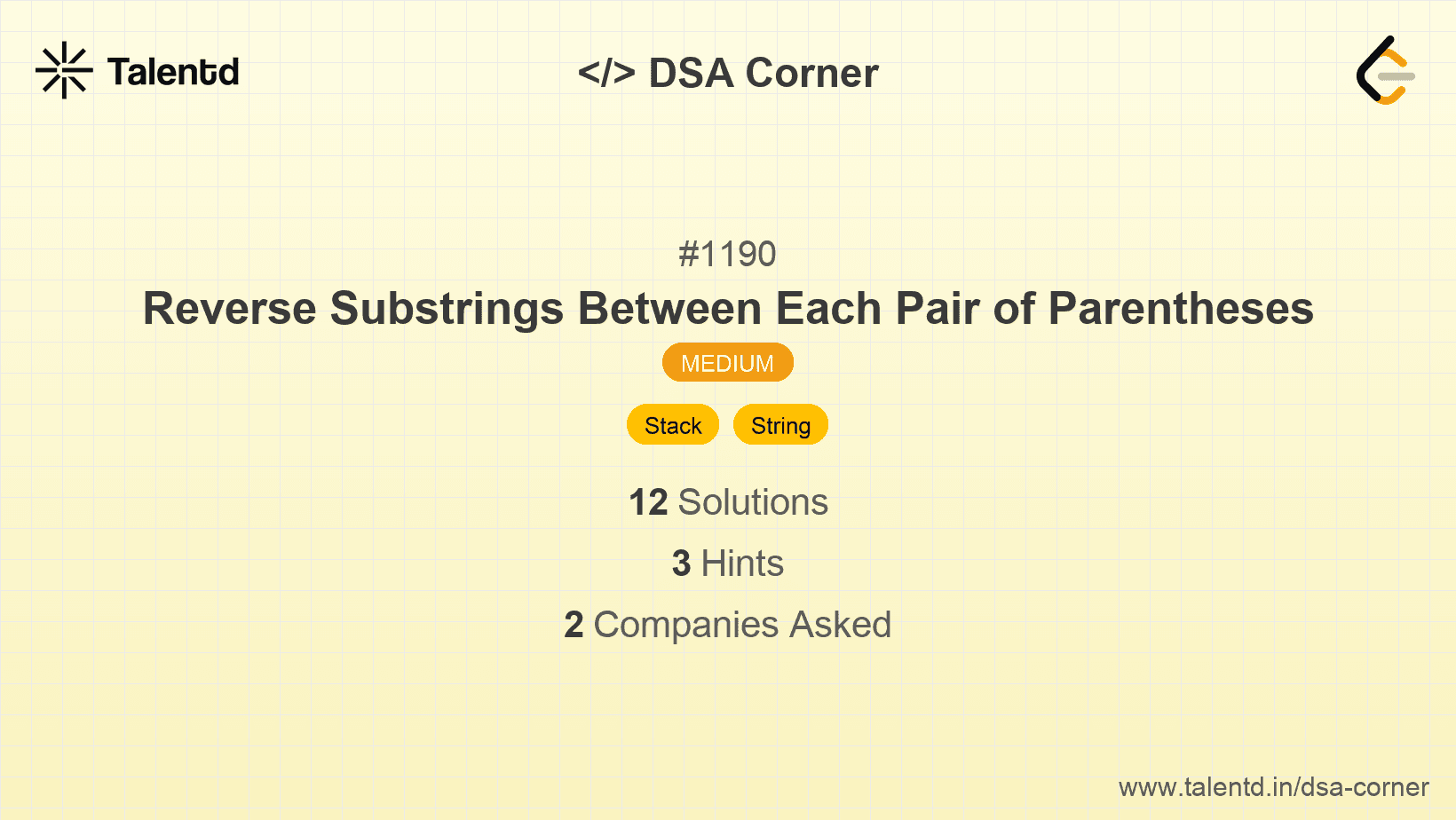
Sponsored
Sponsored
Utilize a stack to handle the nested or paired parentheses efficiently. By pushing characters onto a stack until a closing parenthesis is encountered, then reversing the needed substring, you can leverage the stack's LIFO properties to achieve the desired result.
Time Complexity: O(n).
Space Complexity: O(n) due to the stack usage for storing characters.
1def reverseParentheses(s):
2 stack = []
3 for char in s:
4 if char == ')':
5 queue = []
6 while stack and stack[-1] != '(':
7 queue.append(stack.pop())
8 stack.pop() # pop '('
9 stack.extend(queue)
10 else:
11 stack.append(char)
12 return ''.join(stack)
13
14
15s = '(u(love)i)'
16print(reverseParentheses(s))
17This Python implementation uses a list as a stack to reverse parts of the string contained between parentheses. By popping off characters and utilizing a temporary storage list, it reverses the sequence efficiently and appends it back onto the original processing stack.
This approach involves separately building the result string in a single pass using an auxiliary data structure to track position swaps. The use of local in-string reversals enables an efficient and clean traversal building mechanism.
Time Complexity: O(n).
Space Complexity: O(n), using additional space for parentheses pair tracking and intermediate char arrays.
#include <vector>
#include <stack>
using namespace std;
string reverseParentheses(string s) {
int n = s.length();
vector<int> pair(n, 0);
stack<int> st;
for (int i = 0; i < n; i++) {
if (s[i] == '(') st.push(i);
else if (s[i] == ')') {
int j = st.top(); st.pop();
pair[i] = j;
pair[j] = i;
}
}
string result;
for (int i = 0, d = 1; i < n; i += d) {
if (s[i] == '(' || s[i] == ')') {
i = pair[i];
d = -d;
} else {
result += s[i];
}
}
return result;
}
int main() {
string s = "(ed(et(oc))el)";
cout << reverseParentheses(s) << endl;
return 0;
}
This C++ solution uses a vector for holding paired indices and a stack to manage parenthesis processing. The method effectively accounts for necessary positional reversals, facilitating a clean string pass strategy to build results without additional data structure overhead.